About three weeks ago I was able to photograph adult female Greater Sage-Grouse and their chicks in the Centennial Valley of southwest Montana. This species is on the cusp of a threatened species designation so I’m always thrilled to be able to see and photograph them in their natural, wild habitat. Believe me, it doesn’t happen very often.
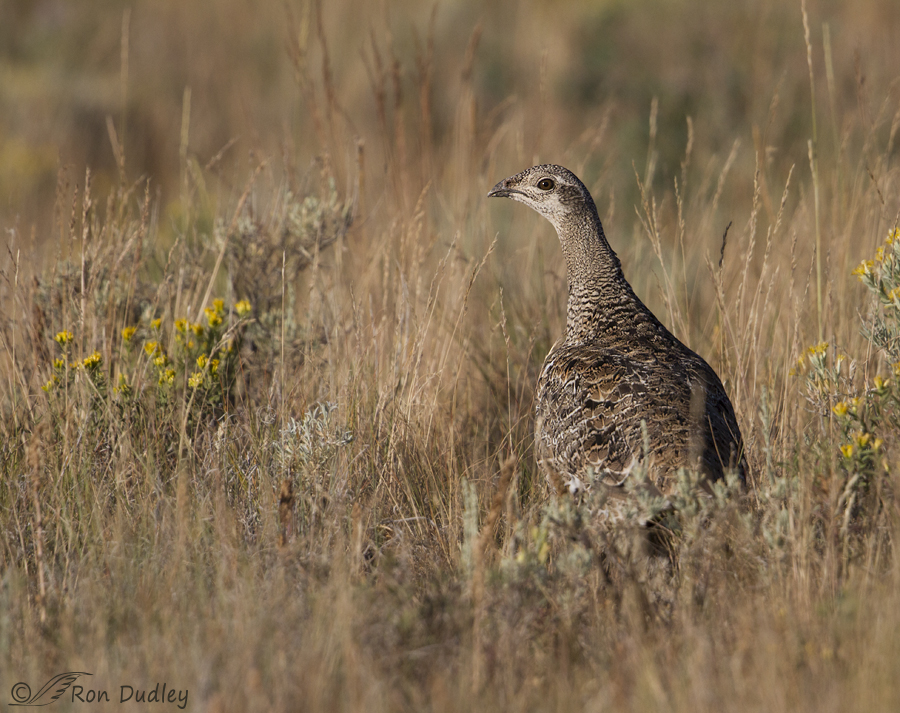
1/3200, f/5.6, ISO 500, Canon 7D, Canon EF500mm f/4L IS II USM +1.4 tc, not baited, set up or called in
Typically on my visits to the area I never see any Sage Grouse but this last trip was an exception as I encountered groups of them on three of the four mornings I looked for them. One of the primary threats to the species is destruction and fragmentation of their sagebrush habitat so I love photos like this that show them in their natural home.
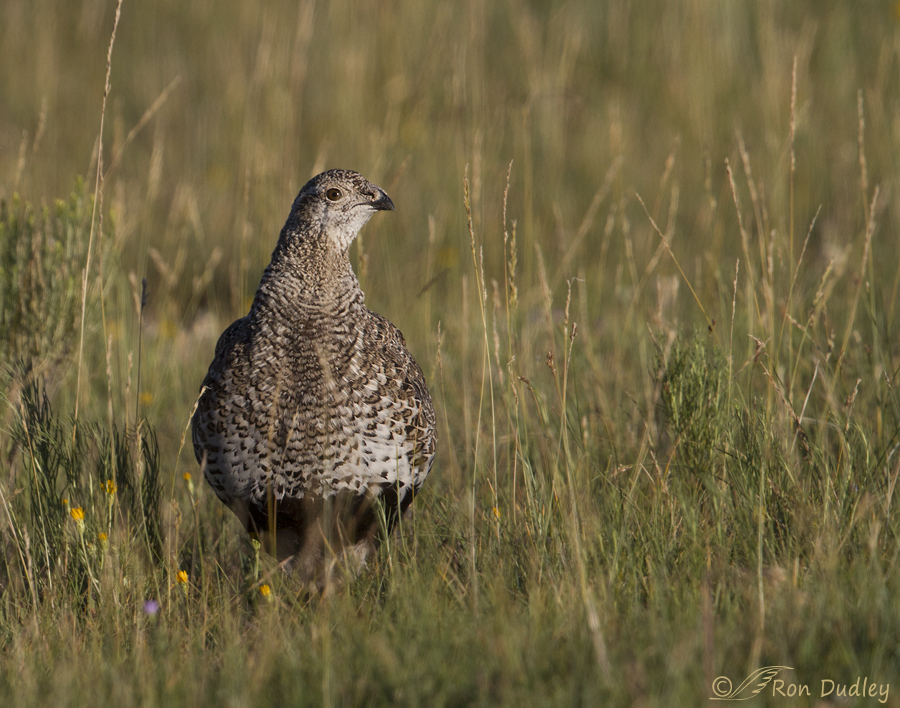
1/2500, f/6.3, ISO 500, Canon 7D, Canon EF500mm f/4L IS II USM +1.4 tc, not baited, set up or called in
They’re not an easy species to get a clear shot of because of their tendency to duck for cover into the grasses and sagebrush. This one eventually came out and looked me over for a few moments.
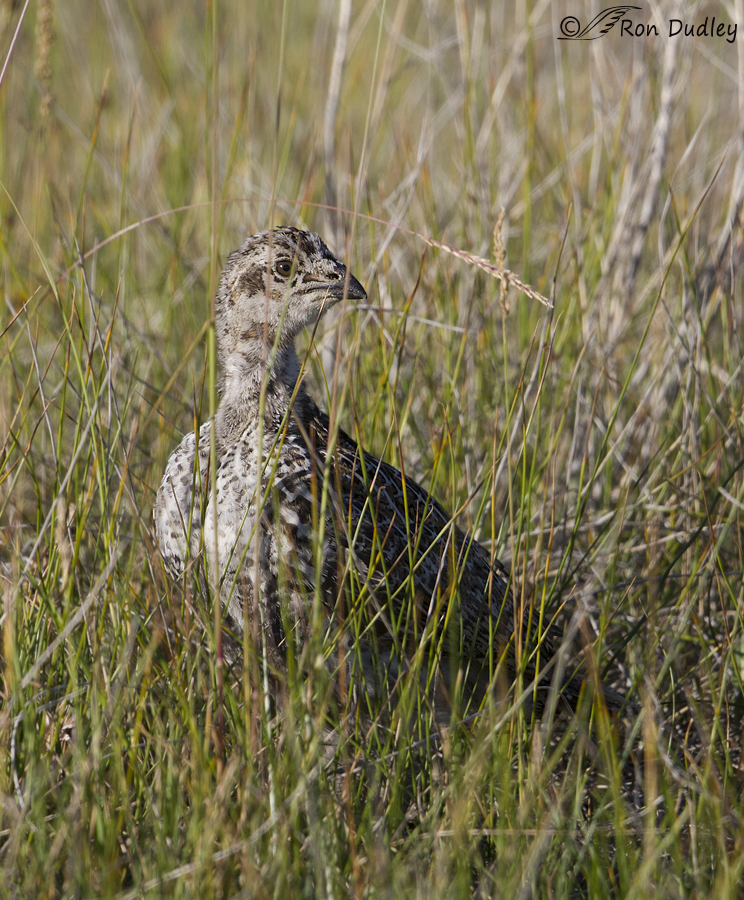
1/2000, f/6.3, ISO 500, Canon 7D, Canon EF500mm f/4L IS II USM +1.4 tc, not baited, set up or called in
I was so very encouraged to see chicks with the adult females this time. Usually they were buried in the grasses but once when the adults crossed the gravel road in front of me I was able to…
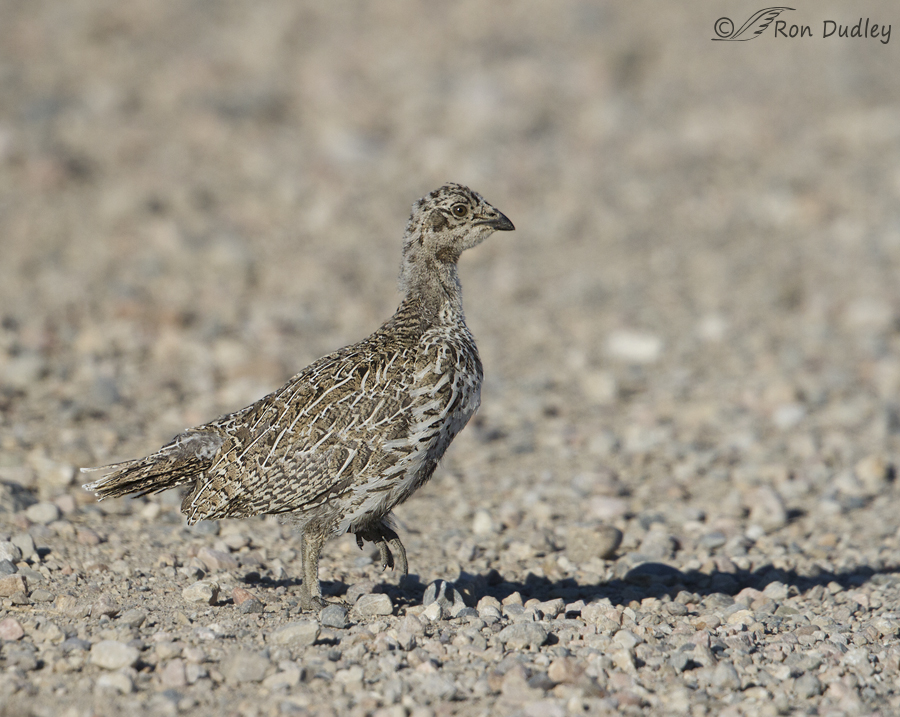
1/3200, f/6.3, ISO 500, Canon 7D, Canon EF500mm f/4L IS II USM +1.4 tc, not baited, set up or called in
get a few clear shots of several of them as they followed the adults. Not a pretty setting but a good look at the young bird.
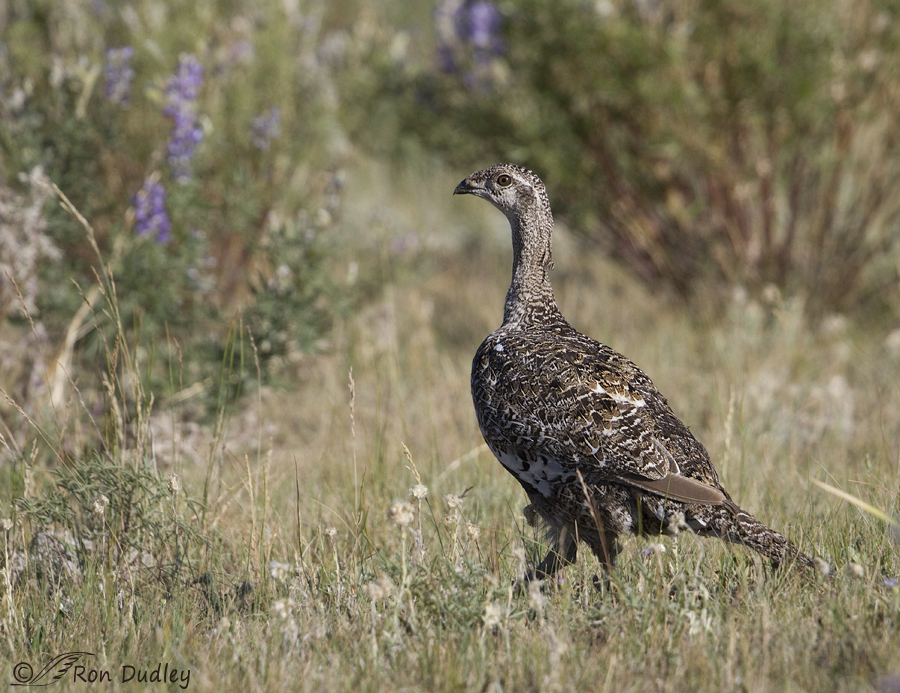
1/2500, f/6.3, ISO 500, Canon 7D, Canon EF500mm f/4L IS II USM +1.4 tc, not baited, set up or called in
This may be the clearest shot I was able to get of an adult in a setting I liked.
Each spring these birds perform their mating rituals on breeding grounds called leks. Many leks have been used for generations – perhaps for thousands of years so when a lek is destroyed or disrupted by development it’s just another nail in the coffin of the Sage Grouse. One such lek close to me in Morgan County, Utah is currently under such a threat and local birders and other concerned citizens are making valiant efforts to intercede but it’s definitely an uphill battle.
If you’ve never seen male Sage Grouse displaying on a lek or watched a good video clip of the behavior you owe it to yourself to watch this one.
The potential listing of the Greater Sage-Grouse as a threatened species under the Endangered Species Act is a highly controversial issue because if it happens many ranchers and energy companies feel threatened by its consequences. The issue is much too complex to do justice to here but here’s a link that does just that if you have the interest.
Ron


I completely missed this (email failure I think. Or deleting too fast). What an interesting bird. Love that you got the shot of the chick!
Or deleting too fast). What an interesting bird. Love that you got the shot of the chick!
Wonderful images, Ron! Really enjoyed the video and the link to the discussion was extremely interesting.
Don’t you love the “textured” look of these beauties?
Hiss and spit. And repeat.
Thank you for the links.
Great pictures!! So sad what man has done to Nature in general. Breaks my heart.
Sad to hear that it is an endangered species. Such an interesting behaviour. Another blame to put on the human race.
Thanks for sharing.
Love your beautiful images so much … enjoyed the video clip!!
Thanks very much, Lois.
I’m very glad you were able to get these pictures. I doubt that I’ll ever have the opportunity to see sage grouse in person. I watched the video and loved how the female was seemingly ignoring all the displays going on around her. The male sage grouse could be where the idea for all the modern, spiky hairdos comes from… I’m also sorry that the issue of getting these birds on the endangered list is so complicated. Not sure why man’s desires always seem to be viewed as more important than anything in nature.
“Not sure why man’s desires always seem to be viewed as more important than anything in nature.”
Here’s my opinion on the subject, Susan. I think it all boils down to two things – human overpopulation and the almighty dollar. Not necessarily in that order. Thank you.
Your information about what ‘s happened to Canada’s sage grouse is so sad and depressing….only about 300 survivors left…and those for how long??? Meanwhile, the human population, and its ramifications, continues to expand and expand and expand…
Evil iPad “beloved”!!!!!! NOT by ME!!!!
Don’t worry Patty your comments are very much appreciated with or without the Evil iPad “strokes”
Interesting clip…males are very noble looking birds…interesting how UNinterested females appears to be…a very cool lady! Bet she’s sizing them up though…
Evil iPad changed sad to dad…it hates me!
Fixed, Patty. But if it’s ok with you I’ll leave your second comment because your “evil iPad” has become such a beloved institution around here!
How sad that a bird once so common is on the verge of beicoming scarce! I especially like the the fourth shot because, although it isn’t the “prettiest”, it shows how well these big birds can blend in with their surroundings. The last shot is a beauty…love the wild flower setting….
Thank you, Patty. Yes, they’re becoming very scarce and the same thing could happen here that happened in Canada. That country once had large, healthy populations of Sage Grouse but because of energy development there’s only 200 birds left in Saskatchewan and fewer than 100 in Alberta. And even those birds are likely to disappear soon.
Lovely photos. I’ve only seen clips of a single male display, not the females and their young. The video clip, which shows several males at once, is quite dramatic! I hope that the sage grouse is given some protected land for a stable base from which to grow a bit.
I agree, Alison. It’s one of the best clips of the behavior on a lek I’ve seen.